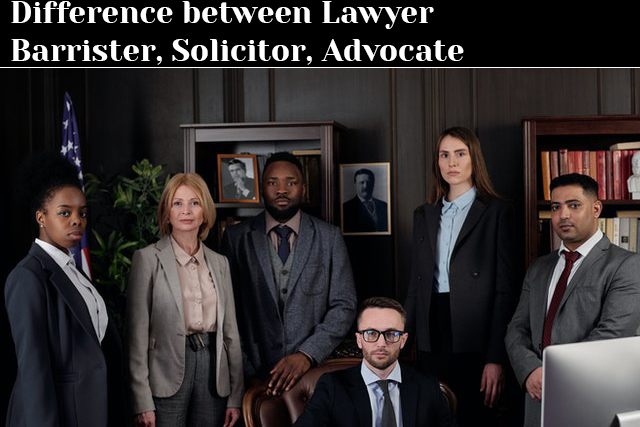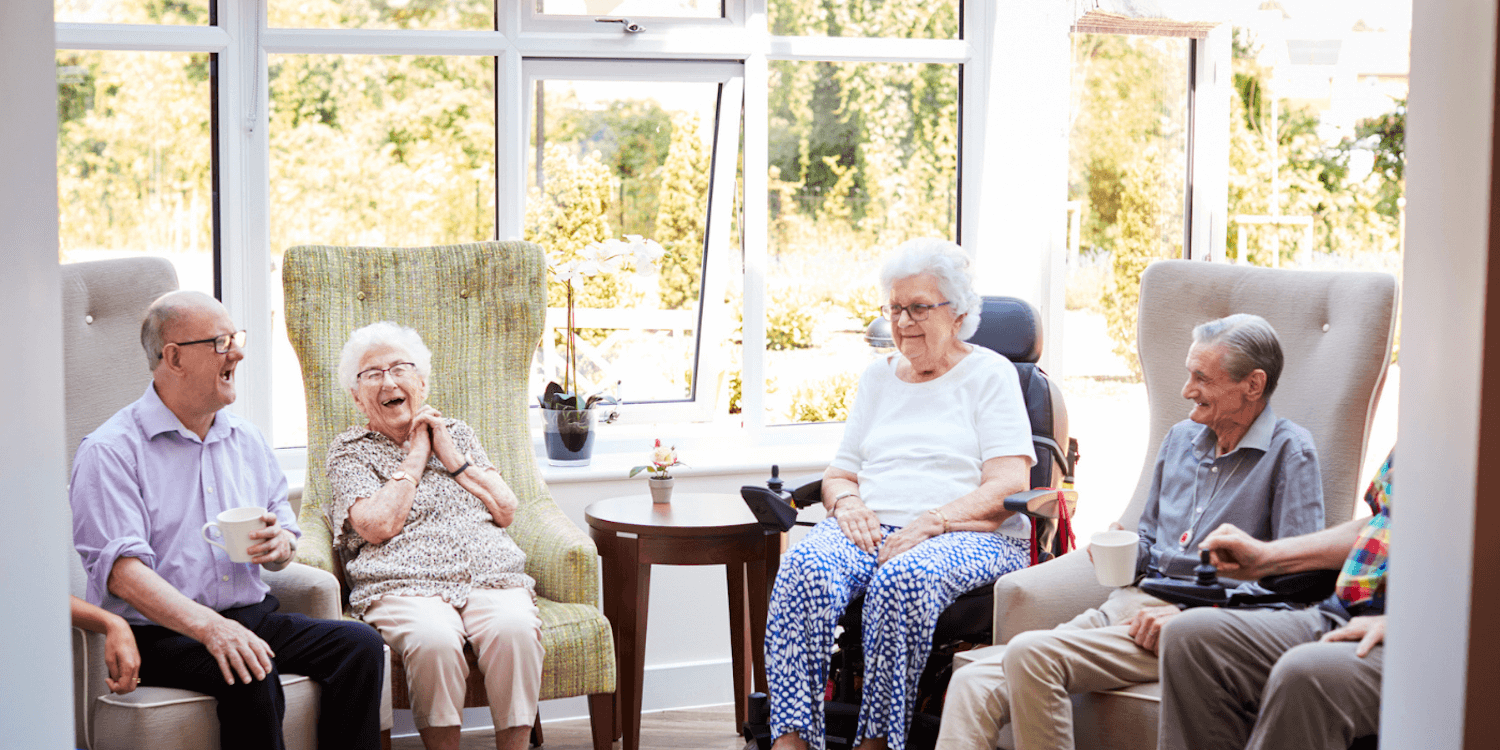[ad_1]

During orientation, before the start of my first year at Wayne State University Law School, I could see what I was up against. I surveyed my 100-plus classmates and realized I was one of just two Asian women, along with few other people of color. On the drive home, I convinced myself that I was going to prove a point with my presence — lawyers can look like me.
What I had come face-to-face with was a sobering truth about America’s legal system: It remains, despite decades of lip service to the virtues of diversity and inclusion, overwhelmingly white and male. As anyone who has ever seen Sam Bernstein ads during Jeopardy! or spotted one of the many billboards for lawyers that line I-94 knows, the law is often a family business. This places budding lawyers from diverse backgrounds — my parents are both nurses who emigrated from the Philippines — in a challenging position from the start.
The American Bar Association (ABA) estimates that, as of 2020, only 37 percent of active lawyers in the U.S. were women, 5 percent were Black, 5 percent were Hispanic, and 2 percent were Asian — and these percentages have remained roughly the same over the past decade. State Bar of Michigan 2021 demographics closely mirror the ABA’s nationwide data, with some notable deviations: Michigan counted Arab Americans, who comprised 2.4 percent of attorneys, and only 1.8 percent of lawyers in the state identified as Hispanic or Latino. Women, at least according to Michigan’s law schools, now dominate some classes of law students.
U.S. District Court Judge Victoria Roberts, the only Black woman to have served as president of the State Bar of Michigan, says progress is slow. The statistics “are abysmal and disappointing, particularly since so much energy and resources have been devoted for decades to growing the ranks of minorities in the legal profession,” she admits.
Why does it matter? As MSNBC legal analyst Kimberly Atkins Stohr, a Michigan native and Wayne State alum, told Hour Detroit earlier this year, “The people in the legal profession — judges, prosecutors, defense attorneys — are the folks through whom the system of justice is administered. If they don’t have an understanding and a background of the real, lived experience of most Americans, then the justice system is skewed against those who have that lived experience. That makes a big difference.”
Encouraging and helping people of color to become lawyers also has an outsized impact on their families and communities. “They grew up, especially a lot of my older family members, in a time where it was very rare to see a Black professional of any type,” says Aaron Burrell, co-chair of the diversity and inclusion committee at the Detroit-headquartered firm Dickinson Wright, which has nearly 500 attorneys. Of those, 30 percent are women and 8 percent are “diverse,” by which the firm means they are members of racial, ethnic, sexual orientation, and gender identity minorities. “In our community, there’s some degree of distrust relative to the justice system. It was good for my family that I was going to take this leap of faith.”

There are many ABA initiatives afoot to change this equation, including national scholarship opportunities and a directory of pipeline programs. ABA President Reginald Turner Jr., a Detroit lawyer and only the 144-year-old group’s fourth Black leader, says, “We all like to envision a time when diversity, equity, and inclusion is just completely available for anyone and everyone, but I don’t think we’ve reached that goal. There’s still much more to do.”
Where many law students belonging to historically underrepresented populations are the first in their families to pursue this profession, it can feel like starting a high stakes race an entire leg behind. The hurdles begin, Roberts says, even before law school, “with a disparate educational system that ill prepares students of color to compete at the college level, let alone law school. Many minority children are never exposed to the notion of law school and do not consider it as a career option. Law school is largely unaffordable to those not in the middle class or higher.”
The brochures and websites of Michigan’s law schools boast a diverse array of students smiling back at you. But the reality is far from picture perfect.
The facts: The student bodies of the law schools at Michigan State University, the University of Detroit Mercy, and Wayne State are all more than 80 percent white, according to disclosures made to the ABA. Only two have substantially improved their diversity over the past decade — the University of Michigan, where students of color comprise 32 percent of J.D. candidates, and Western Michigan University Thomas M. Cooley Law School, where that figure is nearly 39 percent. Both have improved diversity within their student bodies by about 10 percentage points. Wayne Law increased its percentage by around 3 points, while Detroit Mercy Law stayed close to steady.
MSU, meanwhile, went the opposite direction, falling 5 percentage points in the same span. In 2021, the school appointed as its dean Linda Greene, the first Black person in this role, as a sign of their commitment to improving, spokesperson Kelly Kussmaul says. “MSU has committed to significant new scholarship funding in support of students whose backgrounds have demonstrated perseverance, whose past work has supported diverse communities, and who seek to practice law on behalf of underrepresented clients,” she says.
Detroit Mercy Law also installed its first Black dean, Jelani Jefferson Exum, last year. She says she has every intention of enhancing student-body diversity — and says that, since Detroit Mercy is a private law school, she has tools to do so. “We are able to do some things that public institutions can’t do. In our admissions process, we can look at race as a part of a person’s application.”

That’s where it all gets tricky. In 2006, Michigan voters passed Proposal 2, which resulted in an amendment to the state constitution that bans public universities from giving preferential treatment in admissions to applicants based on race, ethnicity, gender, or national origin.
That the University of Michigan Law School improved its diversity makes it an intriguing case study in both the problem and the solution. U-M Law is among the most well-regarded schools in the nation, a quality that attracts high-achieving applicants of all backgrounds.
U-M uses that advantage, says senior assistant dean Sarah Zearfoss, to attract applicants from across the country and around the world. Bolstered by its status and relationships, the law school has organically increased its share of historically underrepresented attendees.
“We work on building and maintaining relationships with minority-serving institutions, like [historically Black colleges and universities] or the Pre-Law Summer Institute at the University of New Mexico, which hosts Native American students,” she says, offering some examples of outreach efforts. Notably, Michigan residents comprised only 24 percent of U-M Law’s fall 2021 entering class.
Meanwhile, state bar data indicate that roughly 69 percent of Michigan attorneys graduated from one of the state’s four other law schools, with the largest chunk coming out of Wayne Law. Yet, Wayne Law, MSU College of Law, and Detroit Mercy Law have fallen short of U-M’s metrics.
In several cases, in-state law schools have tried to break down barriers of entry by offering full-tuition scholarships to, as in the case of Wayne Law, applicants who went to HBCUs, Hispanic-serving institutions, tribal colleges and universities, or Detroit public schools. Also, Detroit Mercy Law offers deferred admission to historically underrepresented applicants who may need additional preparation or academic support before their first year.
It’s still a struggle, though, and one that some schools are only recently working in earnest to address. In 2020, Wayne State hired its first assistant director of student engagement and culture to focus on these issues, 2016 alumna Tiye Greene. Greene noted that when she was a student, conversations about diversity, equity, and inclusion were confined to multicultural student organizations and certain professors. “To effect these changes, to keep diversity a priority, it requires some number of uncomfortable conversations,” Greene says.

The major driver of these conversations: the students. The Black Law Students Association at Wayne State, led by then-President Mikaela Armstead, made several demands following the deaths of George Floyd and Breonna Taylor. These included better course offerings and other training around issues of race, culture, and social movements. Wayne State responded with a new social-movement lawyering course and the formation of both the Black Law Alumni Council and an Anti-Racism Working Group.
In many ways, law students are the boots on the ground. They know firsthand that the systemic inequities do not dissolve the moment an institution launches diversity initiatives. Achieving tangible diversification requires going beyond meetings, statements, or “periods of reflection” following racial atrocities in the news.
Where law schools have faltered, students have added impactful everyday acts of inclusion to their overflowing to-do lists. Student leaders at Wayne State — including myself, as president of the Asian Pacific American Law Students Association — offer first-year students study tips and course outlines. We run practice internship interviews, review application materials, spread the word about scholarships and pipeline programs, and organize panel discussions. WSU’s Black Law Students Association now runs a program in which middle schoolers from Detroit’s David Ellis Academy tour the law school and participate in a debate. And in March at WSU Law, I launched Lawyers Look Like Me, a multiracial and multiethnic student alliance to advocate for better representation.
“It’s frustrating sometimes, as a Black law student or minority law student in general, feeling like you have to be the one to create the change you want to see,” says Armstead, a Detroit native and the first in her family to attend law school. “I wish and I hope that we create a space where we don’t feel like we have to be a certain kind of way.”
This also rings true for Arnulfo Caballero, president of the Latino Law Society at MSU Law. Caballero was raised by a single mom in a Texas border town and earned a scholarship to MSU Law. Now, he’s paying it forward with a mentorship program. “My goal before I graduate is to leave behind a model of leadership that can be followed and improved upon, … and I hope that one day our small but proud community turns into a large and proud one,” he says.
In 1998, when U.S. District Court Judge Roberts was confirmed to the federal bench, she quickly noticed that only minority judges hired minority law clerks. When she asked her white colleagues why, she learned they didn’t receive applications from non-white candidates or couldn’t find anyone who was qualified. From there, the Wolverine Bar Association (WBA), a professional group for Black lawyers, of which Roberts was once president, launched the Judicial Externship Program, in which as many as 17 first- and second-year law students of color work for judges over the summer to get hands-on, practical experience.

It wasn’t the first time Roberts had stepped in to help aspiring attorneys of color find their places in the profession. In 1988, during her tenure as president of the WBA, she launched the Summer Clerkship Program, in which about 15 law students of color per year are placed at large local law firms or corporations for the summer. Roughly 80 percent of the program’s participants later receive post-graduation jobs with large Detroit area firms, she says.
Similar placement programs now exist across the U.S., but the WBA’s summer programs remain an instrumental local pipeline. The application and interview processes for both programs are rigorous, but they have helped many law students get their start — including me. After taking on two boardrooms full of attorney interviewers, I landed both a summer associate position in the Bloomfield Hills office of Plunkett Cooney, which has nine other offices and around 140 attorneys, and an internship at the U.S. District Court for the Eastern District of Michigan.
The summer that followed was invaluable. I had never stepped foot into a law firm before, but once I did, I found dedicated mentors who gave me challenges and guided me through them. I worked with detail-oriented judicial clerks who further honed my skills. My experiences through the WBA ultimately led to a job offer at Plunkett Cooney, where I will be an associate attorney this summer upon passing the bar exam.
Still, the number of students who can take advantage of these opportunities is relatively small, and Detroit, despite being among the nation’s Blackest big cities, remains near the bottom — ranked 25th of 36 legal markets in the percentage of lawyers of color employed by law firms, according to the National Association for Law Placement’s 2021 survey. Women made up 29 percent of Detroit-area law firm partners — and while 6.8 percent of partners who are people of color, just 2.5 percent are women.
While by no means the only available career pathway, the efforts of the Detroit area’s largest law firms, which typically employ more than 100 attorneys, speak to the challenges facing the legal industry’s push for diversity. They remain mostly white spaces.
My own firm, Plunkett Cooney, is starting work to change that. In 2018, CEO Thomas Vincent appointed Laurel McGiffert to be the firm’s first director of diversity and inclusion. Under McGiffert, the firm recruits summer associates through on-campus interviews at HBCUs and other regional law schools with significant minority populations. It also contributes to the WBA’s programs. Plunkett Cooney is working toward attaining Mansfield Rule Certification, which is given to law firms that consider at least 30 percent women, lawyers of color, LGBTQ+ lawyers, and lawyers with disabilities for leadership roles. Seven other firms with Michigan offices are also working on this certification for midsize firms, and at least nine large law firms with Michigan offices are applying for or already have this distinction.
“We believe that it’s going to help us move the needle, and it involves the whole firm,” McGiffert says. “Thirty percent is not a magical number, but … if you increase your pool of diverse candidates that you consider, you will end up increasing your diversification.”

McGiffert says diversity efforts have become good for business: “Our clients are demanding that, in order for us to keep their business, we must diversify our firm in general and, more specifically, the client teams that we present. Now everybody understands that it’s not just a matter of thriving, … but it’s a matter of surviving.”
Burrell, the diversity committee chair at Dickinson Wright, insists that the firm is “not playing around” — citing several prominent attorneys of color who have practiced there, including W. Anthony Jenkins, a former Michigan Bar president, and Dennis Archer, the former Detroit mayor.
Michelle Crockett, who in 2008 became the first Black female partner at the Detroit-based firm Miller Canfield, left the firm in 2013 because she was frustrated by the slow pace of progress and retention issues. But she returned the next year after being persuaded that leadership was taking sincere steps toward real change. The firm became the first in Michigan to earn the Mansfield Rule diversity certification.
“What I have really learned along the way is you have to be patient with people,” says Crockett, now chief diversity officer and deputy executive officer. “You have to bring people along with you, and that’s sort of what’s happened at our firm. People now see the benefits.”
That doesn’t make living up to diversity goals easy. A GPA below 3.0 can knock law students out of contention for spots at large law firms like hers, which means “all of the firms are competing for the same small number of qualified students of color,” Crockett says.
Rachel Myung, a partner at Honigman, a Detroit-based firm with more than 300 attorneys, explains that retention is harder than hiring and recruiting. What really hurts women and minorities, she says, is their hesitance to speak up when they feel discounted.

“We don’t feel like we can say that something is wrong because we’re trying so hard to assimilate,” says Myung, whose parents immigrated to the U.S. from South Korea when she was a child. “I’m not in the locker room with the boys; I’m not going on these golf outings or maybe these other lunches and happy hours. … What needs to happen more for other women and minorities is people in power coming down and saying, ‘Hey, what’s going on?’ I think that takes courage on both sides.”
Perhaps the most potent way to counter that is with mentorship programs, says Abril Valdes Siewert, president-elect of the Hispanic Bar Association of Michigan. “[I want to] make it so that we’re a phone-call-away resource for law students,” she says. “Find people like me. Find groups like [ours] to be able to be yourself and ask those questions that you feel vulnerable or embarrassed by.”
This is precisely what helped me settle in at Wayne Law. In my first year, I googled “Filipino attorney in Michigan” and cold-emailed Reginald Pacis, a shareholder at Butzel Long, a 100-plus attorney law firm with offices in Michigan, New York, and Washington, D.C. We had lunch a couple of weeks later, which included a pep talk over chicken adobo and advice on navigating exams. He also acknowledged his own struggles in law school.
That was the first time I ever sat in front of an attorney who looked like me, and it meant so much to see what I could be. At the end of the meal, Pacis asked me to promise to pay the experience forward and continue to pass advice on to other law students. And I did, because interactions such as this take mere moments, but they have the potential to inspire confidence and change career trajectories.
This story is from the April 2022 issue of Hour Detroit. Read more in our digital edition.
[ad_2]
Source link








